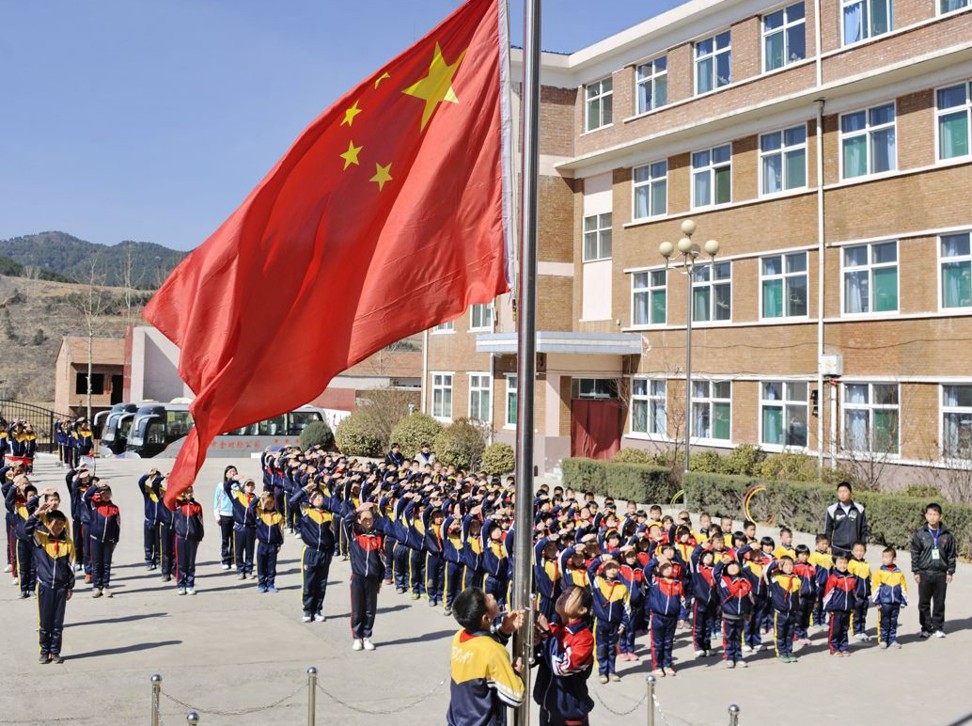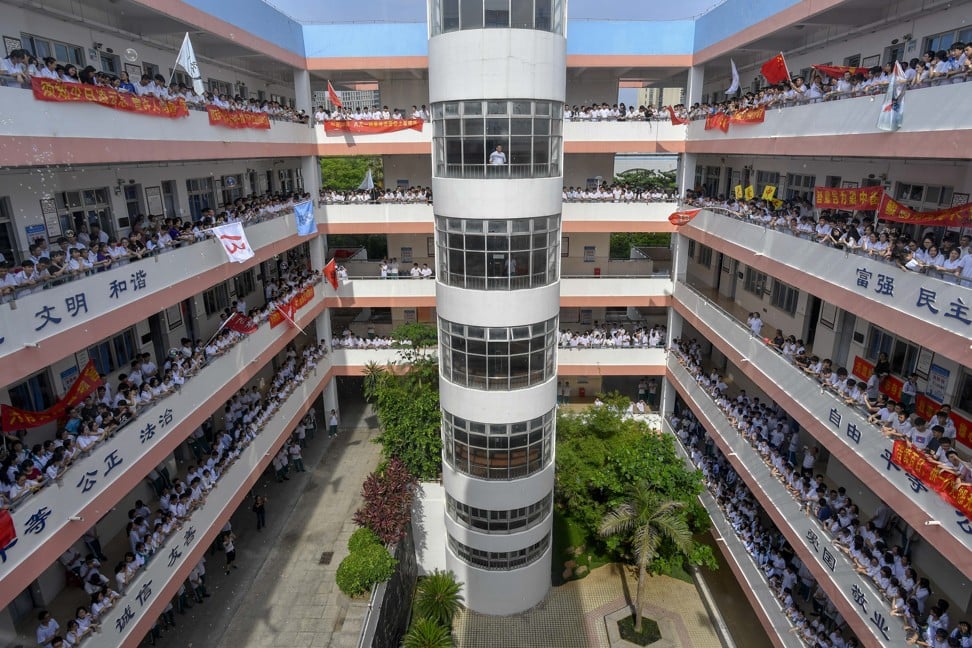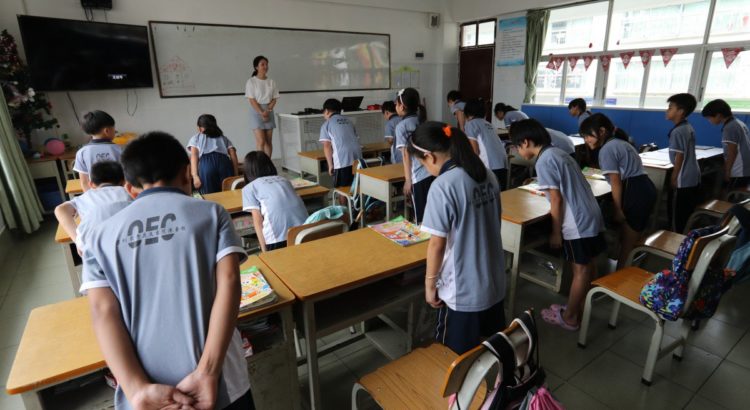Asia/ China/ 02.09.2019/ Source: www.scmp.com.
- Only 35,000 students out of a total of nearly 80,000 were accepted into local public secondary schools last year for education between the ages of 16-18
- Beijing’s new ambitious plan is to turn the home of the likes of Huawei, Tencent and DJI into a model city by 2035
Alice Xu’s worries about the education prospects of her nine-year-old daughter have caused sleepless nights over the last few days, and got so bad that the Shenzhen resident took herself to the doctors after hearing that fewer than half the children in the city are admitted to public secondary schools after completing the nine years of compulsory education.
“The doctor told me I’m not alone and that he had seen many patients like me who are anxious,” said Xu, who herself is a middle school teacher, teaching children aged between 14-16.
But despite her best efforts, the reality is that her daughter has more than a 50 per cent chance of failing to gain entry into an affordable and good-quality public school between the ages of 16-18 after completing her mandatory education.
“[We can only] talk and share the worries and depression anywhere and anytime,” she said, echoing the feelings of many helpless parents.
According to official data, only 35,000 students in Shenzhen out of a total of nearly 80,000 were accepted into local public secondary schools last year for education from 16-18, putting them on a path that would allow them to take the rigorous gaokao college entrance exam.
This leaves many forced to turn to expensive private secondary schools, and in some cases overseas establishments, while some leave Shenzhen to attend schools in their parent’s hometown with local authorities tending to focus on recruiting students who are born locally.
But taking into account private secondary schools, the chance of a child earning a place in a public secondary school would only rise to around 57 per cent. That would be just below the national average, but well behind the 86 per cent achieved in Beijing and the 69 per cent in neighbouring Guangzhou.
Shenzhen’s problem stems from its meteoric growth from a small fishing village of a few thousand in the 1980s to a city of 13 million, fed by a continuous inflow of domestic migrants, with the number of secondary schools failing to keep up with the expanding population.
The problem is also set to get worse as Shenzhen’s preschool system is already straining under the pressure of the city’s high birth rate. So, while Shenzhen is grabbing headlines for its impressive economic growth having grown bigger than neighbouring Hong Kong, and for being the home of prominent technology firms Huawei, Tencent and DJI, it is lagging in providing basic public services such as education.
The city has 344 primary schools, well below the 961 primary schools in Guangzhou, which has a comparable population of 15 million, according to official data. Guangzhou also has more primary school teachers – 44,749 compared to 27,795 – indicating its students are also receiving a better quality education.
A small group of delegates from the Shenzhen People’s Congress, the city’s ceremonial local legislature, have taken the unusual step of speaking in one voice to publicly urge increased investment in education, but the municipal education authority responded earlier this year that there is not enough land available to build new schools, according to local media reports.

One government official, who declined to be named as he is not authorised to speak to the media, said the municipal government does not support building new secondary schools because “it won’t be seen as a political achievement”.
“No district government in Shenzhen is willing to provide free or cheap land to build secondary schools,” the official said. Instead, land is often reserved for property developers or hi-tech projects that can boost local financial revenues and the political futures of the officials who support the projects, he added.
Shenzhen’s problems have been noticed by the central government, who, as part of its plan to make Shenzhen a model city, asked the city to expand its primary education services and to broaden its coverage of secondary school education.
Cici Deng, the mother of a 14-year-old girl in Shenzhen, said the underdeveloped public education services is tarnishing Shenzhen’s reputation as a model city. She added that the financial pressures of ensuring that a child obtains a place at a good public school can also be enormous.
“One method is to buy a flat near the school,” she said, because students living within a particular school district are automatically enrolled regardless of their exam scores.
Both teachers at the schools and other parents urge you to join after class education training programmes. That seems to be a must if a student wants to get a good score
But that brings with it problems of its own for a middle-income household in the city because a three-bedroom flat can easily cost 10 million yuan (US$1.4 million).
In general, home prices in Shenzhen are broadly comparable with New York and Tokyo, with new homes selling at an average of about 5,100 yuan (US$712) per square foot, while those located near sought-after schools can cost up to 14,000 yuan (US$2,000) per square foot.
Alternatively, children who score in the top 44 per cent of the secondary school entrance exam are automatically enrolled. This is the method favoured by Deng, who is this month spending 12,000 yuan (US$1,675) to send her teenage daughter to a 15-day private tutorial session covering Chinese, maths and English which are the three key subjects covered by the exam.
“Both teachers at the schools and other parents urge you to join after class education training programmes,” said Li Yuchen, the mother of an eight-year-old boy. “That seems to be a must if a student wants to get a good score. Our children are always on their way to a class or going home after class.
“Because most children go to tutoring classes every day, your child would feel very bored at home if he doesn’t go because he won’t be able to find any peers to play with. Now, the situation in Shenzhen is particularly odd, that is, because children can only see friends and have partners in after school classes.
“Half of the mothers of my boy’s classmates quit their jobs and became full time moms to help their children study and score well. I also felt sharp chest pains after hearing that someone bought a house in a school district. It made me feel guilty about [not providing for] my child.”

Affluent families of primary and junior secondary school students have been paying between 100,000 (US$14,000) and 200,000 yuan per year for private schools that focus on English and internationally recognised diplomas to better prepare them for secondary schools and universities abroad.
But now, even they are worried about the risks of changing government policies after China’s education ministry announced in March its latest measures to prevent primary and junior secondary school students – either public or private – from enrolling in international schools or international sections of regular schools.
In addition, schools set up for the children of foreign workers are not allowed to admit any Chinese students, the ministry said.
“The uncertainty over China’s education policies is increasing,” said parent Cheng Li. “My child’s school just added many new Chinese compulsory education subjects to the curriculum to match the policy.
“We feel the climate for education, business, and society is turning conservative. We do worry about the change.”
Fuente de la noticia: https://www.scmp.com/economy/china-economy/article/3024730/shenzhen-set-be-chinas-new-model-city-why-are-parents-losing







 Users Today : 19
Users Today : 19 Total Users : 35460150
Total Users : 35460150 Views Today : 33
Views Today : 33 Total views : 3418816
Total views : 3418816